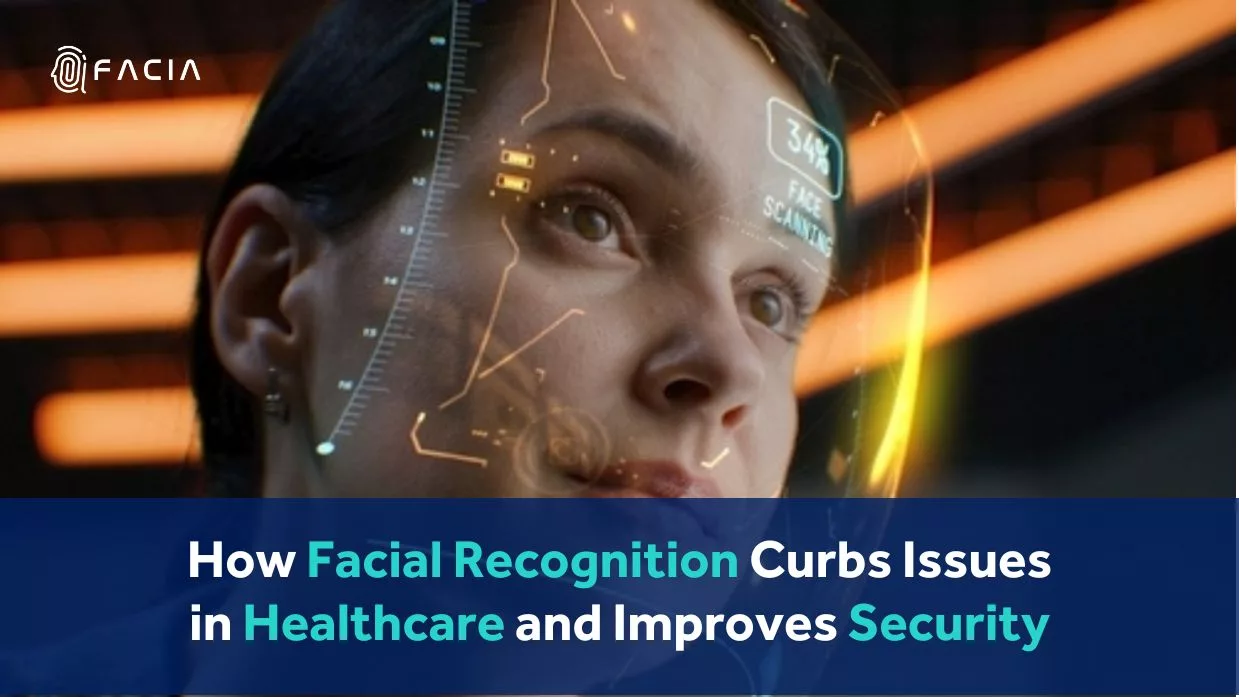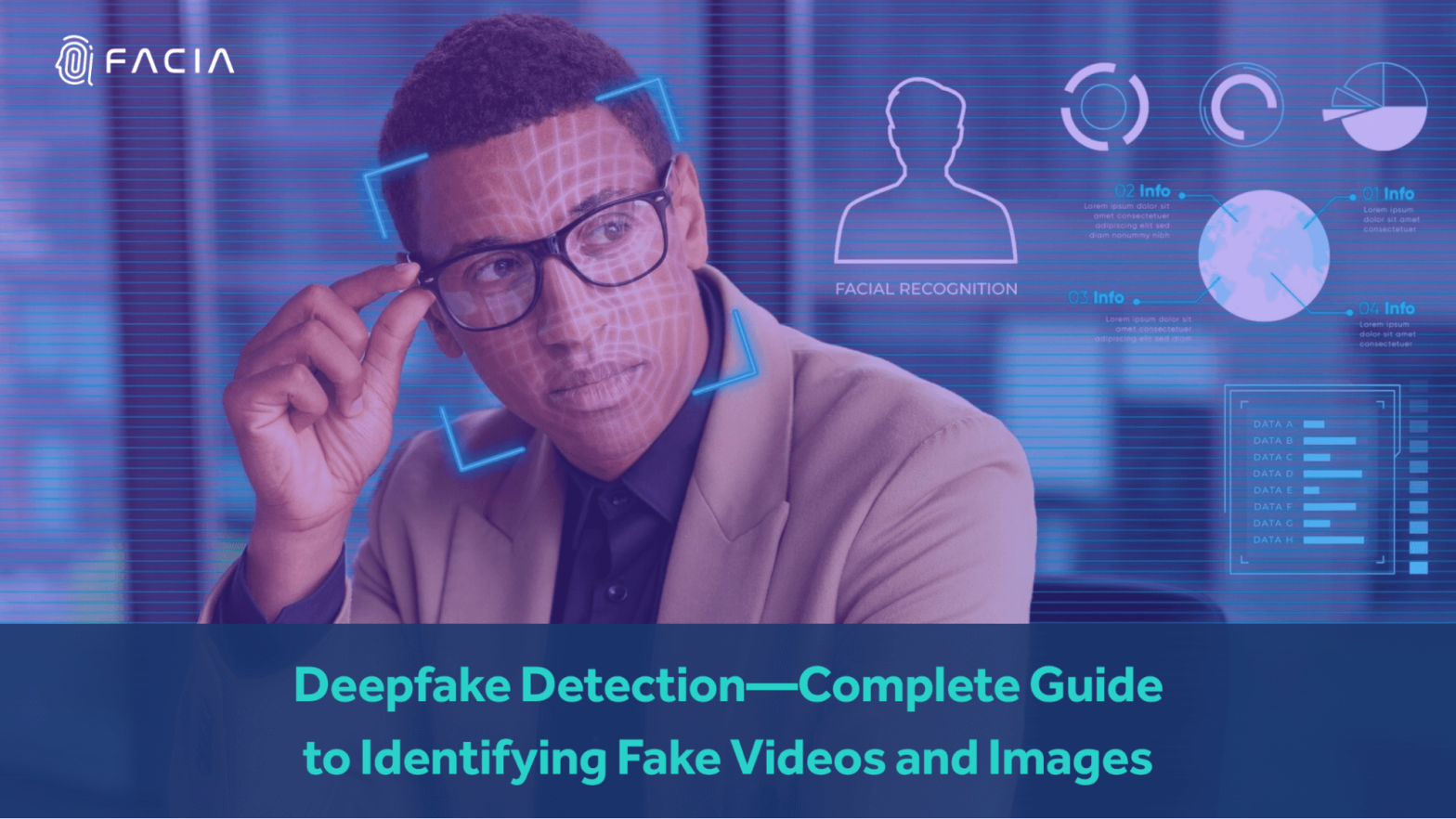
How Facial Recognition Tackles Issues in Healthcare
Author: admin | 26 Jun 2023In This Post
With a quick look, devices activate, and security cameras quietly recognize people. Over time, Facial Recognition Technology (FRT) has made impressive progress, becoming more advanced and incredibly easy to use. This evolution has caught attention, particularly in the medical field.
In the healthcare industry, facial recognition technology emerges as a game-changer with the potential to reshape how we experience medical care. With the help of intricate facial recognition algorithms and cutting-edge deep learning techniques, healthcare providers are actively redesigning patient care and safety strategies. This novel approach ensures smooth patient identification and verification within healthcare facilities, effectively reducing the chances of medical errors and bolstering patient safety.
The impact of FRT goes beyond healthcare, extending to governments that use its power for different public services, like handling transportation payments and providing rebates.
Facial Recognition Technology (FRT) uses software to create maps of facial features and keeps the data as face templates. Machine learning algorithms then compare facial pictures to confirm identity or for authentication.
What is Facial Recognition Technology?
Facial recognition is a biometrics technology that employs algorithms to analyze and recognize a person based on inherent characteristics such as their eye retina, nose shapes, and distances, as well as other facial features and expressions.
FRT shows promise in healthcare, where it might help diagnose genetic disorders, monitor patients, and predict health indicators. Facial recognition tech has grown extensively recently, especially in the healthcare industry. From better patient care to more efficient administrative procedures, it has much to offer the healthcare sector.
Use Cases Of FRT in Healthcare
Face recognition is an artificial intelligence technology that analyzes and compares images of human faces for identification or authentication. Facial recognition systems can streamline patient identification, aid in diagnoses, and even outperform clinicians in specific scenarios.
Beyond identifying patients, face recognition technology offers a new angle to diagnostics and improves how doctors interact with patients. Doctors can now actively analyze facial expressions, picking up subtle signals that help them assess patient conditions more accurately. This blend of computer vision and facial recognition algorithms makes managing patient data smoother and raises the standard of care.
Some of the ways facial recognition technology can be used in healthcare are:
Patient Identification and Verification
Face recognition technology can accurately identify and verify patients, especially when they don’t have their ID or can’t remember their information. This can help avoid medical errors caused by mistaken identity and can also help prevent insurance fraud.
FRT’s algorithms can identify subtle cues, such as signs of depression, leading to timely intervention and better patient care.
- Face2Gene and similar apps show FRT’s power by helping doctors detect rare genetic conditions. They use facial features to spot things that regular exams might miss.
- FRT got even better with deep learning, like DeepGestalt. It beats doctors at diagnosing syndromes and is super accurate. This shows that FRT can make diagnoses more precise and improve patient care.
Access Control
Facial recognition technology can control access to restricted areas such as hospital wards, laboratories, and medical equipment rooms. This improves security and prevents unauthorized access to sensitive areas.
Patient Monitoring
Facial recognition technology can monitor patient movement and behaviour, especially when patients risk falling or wandering. This will help in improving patient safety and prevent accidents.
Staff Identification and Verification
Facial recognition technology can identify and verify staff members, which can help prevent impersonation and improve security.
Facia Face ID verification enhances security and streamlines the identity verification process.
Benefits of Facial Recognition Technology in Healthcare
Implementing facial recognition technology in healthcare can provide a wide range of benefits, such as:
Improved Patient Safety
Facial recognition technology can help improve patient safety by preventing medical errors caused by mistaken identity, monitoring patient behaviour and movement, and improving security.
Enhanced Security
Facial recognition technology can help enhance security by controlling access to sensitive areas, verifying staff and patient identities, and preventing unauthorized access.
Increased Efficiency
Facial recognition technology can help increase efficiency by reducing the time and resources required for patient identification and verification, improving administrative processes, and reducing paperwork.
Better Patient Experience
By reducing wait times, increasing accuracy, and enhancing patient privacy, facial recognition technology can help patients have a better experience.
Discover the Top 10 Uses of Facial Recognition Systems in 2023
Ethical Considerations in Utilizing FRT for Healthcare
As Face Recognition Technology (FRT) gains ground in healthcare, ethical dimensions emerge, demanding our attention and reflection.
- Consent: Patients must be fully aware of data uses as FRT enters diagnostics.
- Continuous Data Input: Balancing data needs and patient autonomy is crucial.
- Addressing Bias: Mitigating biases ensure fair outcomes for diverse patients.
- Privacy Concerns: Safeguarding stored facial images demands reimagined privacy measures.
- Patient-Clinician Relationships: Harmonizing FRT with human connection is a challenge.
- Broader Implications: FRT’s effects on liability, trust, and healthcare need evaluation.
- Ethical Integration: Transparent, consent-driven, unbiased FRT integration is critical.
Check out facial recognition ethics and ethical implication.
Facia: Facial Recognition World Leader
Facia is a global leader in facial recognition technology specifically designed for the healthcare industry. Facial recognition solution is designed to help healthcare organizations enhance patient care, improve administrative processes, and increase security.
Facia’s solution includes features like accurate face recognition, real-time liveness detection (insurance fraud prevention), and secure photo ID matching. The technology also offers age estimation, efficient face search, and advanced iris recognition.
Facia Passed iBeta Presentation Attack Detection Requirements.
Facia: Elevating Biometric Authentication
- AI Technology: Seamlessly combines cutting-edge facial recognition and 3D liveness detection for biometric authentication.
- Lightning-Fast Verification: Authenticate users in under 1 second, ensuring efficiency without compromising security.
- Enhanced Security: Passive and active liveness detection thwart impersonation and guarantee live user access.
- Unmatched Accuracy: Achieve a remarkable 0% False Acceptance Rate (FAR) and less than 1% False Rejection Rate (FRR) for genuine users.
- Seamless Integration: Effortlessly integrates with current systems, supporting iOS and Android via SDKs for consistent user experience.
- Protection Against Attacks: Robust security thwarts injection attacks and safeguards user data during authentication.
- Combatting Sophistication: Facia’s AI-powered system effectively counters deep fakes and spoof attacks, ensuring unparalleled security.
Conclusion
Facial Recognition Technology (FRT) is rapidly rising, poised to revolutionize healthcare. It streamlines patient identification, aids in diagnosing rare conditions, and supports healthcare professionals. Yet, as we embrace FRT’s potential, we must tackle challenges like data security and bias.
Facia’s facial recognition system aligns seamlessly with HIPAA regulations, ensuring patient protection remains paramount. Our innovative solution effortlessly integrates with your current electronic health record (EHR) systems, offering versatile compatibility across various devices, including smartphones, tablets, and laptops. Unleash the potential of cutting-edge technology to revolutionize healthcare powered by Facia.
Frequently Asked Questions
Facial recognition technology can be safe for patient data if it is implemented properly. Healthcare organizations must ensure that the technology is compliant and patient privacy is protected.
Facial recognition technology can be biased if it is not designed to be fair and unbiased. It is essential to ensure that the technology is tested for bias and that measures are in place to mitigate any biases.
Facial recognition technology can be highly accurate when it is properly implemented and used in optimal conditions. However, accuracy can be affected by poor lighting conditions, facial hair, and facial expressions.
Facial recognition technology can improve patient care by providing fast and accurate patient identification, reducing administrative errors, and enabling personalized care based on patient history and preferences.
Facial recognition technology cannot replace human interaction in healthcare. While it can improve efficiency and accuracy, it is still important to have human interaction and empathy in healthcare.








